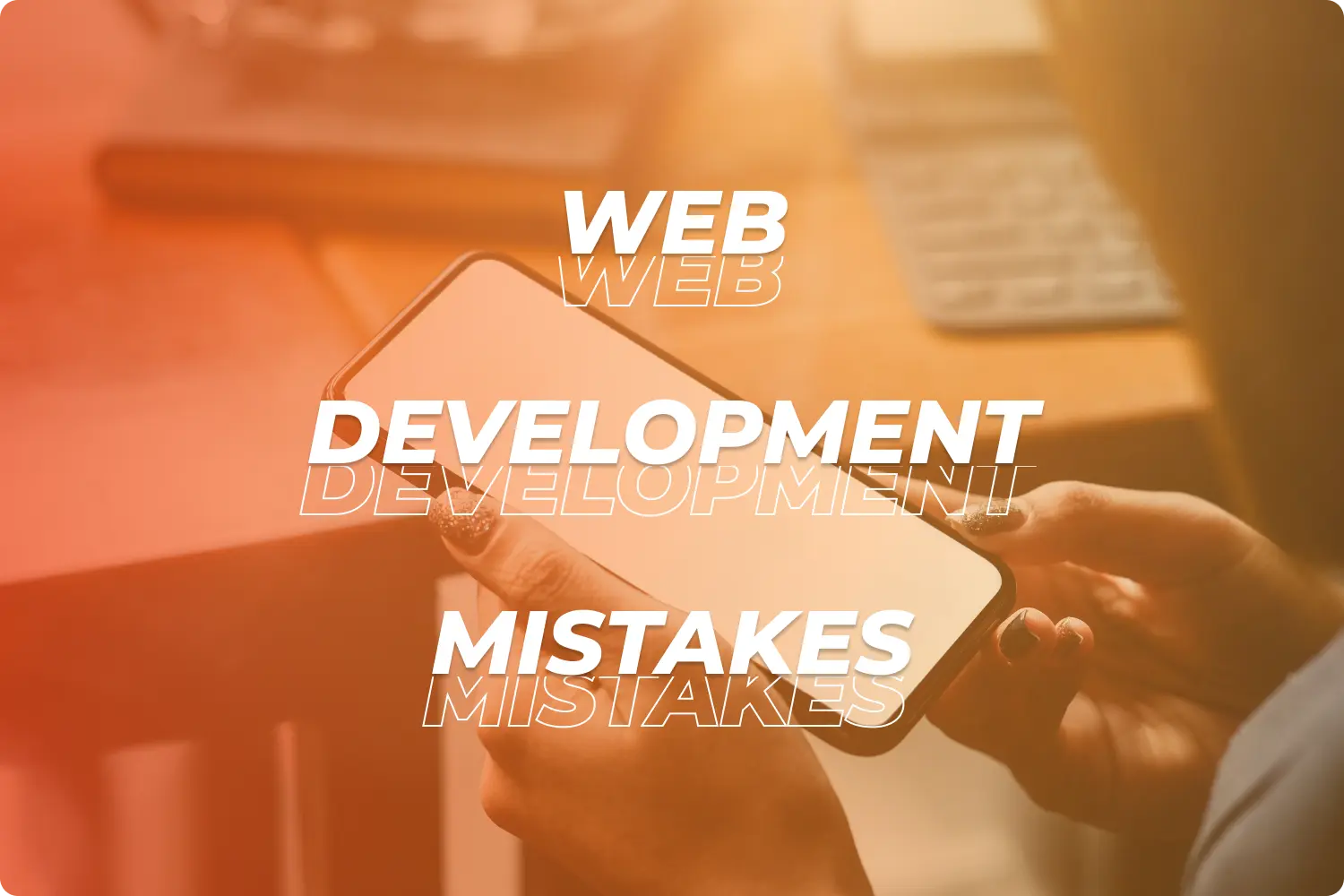Web Development Mistakes That Could Be Costing Your Business Money
A business website acts as its digital shop window, shaping customers’ first impressions and directly affecting revenue. When a site is slow, hard to use, or feels unsafe, visitors can take their business elsewhere. Common web development mistakes often go unnoticed, but the cost shows up fast in lost leads, shrinking customer lists, and revenue dips. Through my experience working with UK businesses on their websites, I’ve seen how avoidable errors can drain growth potential. This guide highlights web development mistakes that could be costing your business money, along with clear, practical steps to avoid them. In this article, we’ll dig into critical issues and share actionable solutions for your online presence.
Is Your Business Website Losing Money?
Every time your website misfires, you lose out on opportunities. Whether it’s someone unable to use your site on mobile, a visitor turned away by slow-loading pages, or a potential lead worried about security, these missteps directly impact your bottom line. A reliable business site works in the background to convert visitors, support marketing, and serve as a trustworthy information source. Any gap in these areas can quickly see spending on design, ads, or content return less than expected. Addressing web development mistakes early keeps your business from leaking value day after day.
Mistake 1: Ignoring Mobile Optimisation
Over 60% of internet traffic in the UK now comes from mobile devices. If your site isn’t mobile-friendly, you’re likely frustrating more than half your online visitors. Google uses mobile-first indexing, meaning your mobile site defines how you rank in search results. Common problems include hard-to-tap buttons, text or forms cut off on smaller screens, and layouts that don’t adjust automatically. These issues drive high bounce rates, low engagement, and lower conversions, especially as mobile users expect fast and seamless interactions. To resolve this, I use responsive frameworks like Bootstrap, run checks via the Google Mobile-Friendly Test, and recommend regular mobile user audits. Building with mobile at the core is not just extra—it’s essential to reach customers where they are.
Mistake 2: Slow Website Loading Times
Waiting for a slow website is annoying enough to send most visitors to a competitor. Research shows that even a one-second delay in page load can cause a 7% drop in conversions. There are a few culprits, including large, unoptimised images, heavy code, slow server response, and unneeded plugins. In my experience, many businesses overlook the long-term drag of slow performance because page loads seem good enough to staff who don’t test on varied networks and devices. Tools like GTmetrix and Google PageSpeed Insights give clear diagnoses. Common fixes that have helped our clients include compressing images before upload, turning on lazy loading so images only load as users scroll, setting up browser caching, and serving assets over a content delivery network (CDN) to keep loading quick for UK and international visitors.
Mistake 3: Weak Website Security
Cyberattacks and data breaches aren’t just a worry for big brands; small businesses face costly risks, too. Under UK GDPR rules, a security incident can mean lost data, regulator fines, and loss of trust. Many sites still operate without full HTTPS, run outdated software, or offer weak protection for customer login areas. Over my career, I’ve seen real problems arise from basic errors like default admin usernames or plugins that haven’t received security patches. Simple preventative steps go a long way. I always secure sites with SSL certificates, enable two-factor authentication (2FA) for admin areas, set up firewalls, and recommend trusted security plugins like Wordfence for WordPress or Sucuri for other platforms. These changes quickly boost your defence and reassure visitors that their data is safe with you.
Mistake 4: Broken SEO Structure and Technical Errors
A website’s technical structure is the foundation for SEO performance and search visibility. Broken links, missing meta descriptions, duplicate content, and messy heading use signal to Google that a site lacks attention to detail. Using the correct hierarchy—starting with an H1 as your main headline, followed by H2 and H3 for sections and supporting points—helps search engines and visitors find their way with ease. When I run SEO audits using Screaming Frog, these gaps crop up regularly, hurting organic rankings. Strong SEO structure includes accurate meta tags, a clean sitemap, a well-ordered robots.txt file, and fixing broken links as soon as they appear. Getting this right can be the difference between ranking on page one and being invisible in search.
Mistake 5: Poor UX and Confusing Navigation
A difficult or confusing website experience sends visitors away fast. High bounce rates and short average session times show when users aren’t finding what they need. Common signs I’ve spotted in audits include menus that change from page to page, unclear calls to action (CTAs), and layouts that make it tricky to find essential info. These issues don’t just annoy users; they block sales and lead generation efforts. Tools like Hotjar heatmaps reveal where users struggle. Bringing order to navigation, keeping menus consistent, and highlighting next steps with obvious CTAs have helped many UK businesses I’ve worked with increase conversions and keep their visitors involved for longer.
Mistake 6: Outdated CMS or Plugins
Running an old version of WordPress, Joomla, or Drupal puts your site at risk. Outdated content management systems and plugins bring security holes, bugs, and missed functionality updates. I often encounter sites with plugins that haven’t been updated in years, mixing well-maintained tools with abandoned ones. These setups increase the risk of malware, slow performance, and conflict between site features. Setting up a routine for CMS and plugin updates, running audits every quarter, and replacing unsupported tools with safer modern alternatives keeps a site secure and performing reliably. Some businesses I’ve worked with have even moved to more modern tech stacks to unlock easier management and better futureproofing.
Mistake 7: Treating Websites as “Done” After Launch
Many businesses tick “website” off their project list once it goes live, assuming the job is done. In practice, a site needs regular checking and maintenance to stay fast, secure, and effective. Since technology, customer needs, and competitors change quickly, ignoring fresh issues can mean broken features, missed sales, and slipping SEO performance. My advice is to set a straightforward schedule for maintenance, whether monthly or quarterly, covering software updates, checking site speed, repairing broken links, and reviewing content for accuracy and relevance. Backup systems should be in place, and content should be reviewed regularly so outdated products or offers don’t linger. Treating the website as a living business asset keeps it supporting goals without surprise downtime or costly problems.
Mistake 8: Failing to Meet Accessibility Standards
An accessible website welcomes all users, including those with disabilities. Under UK law and the Web Content Accessibility Guidelines (WCAG), sites should offer readable text, usable forms, and flexible navigation for everyone. Risking legal complaints or shutting out a portion of your market harms both the brand and your bottom line. Common mistakes I’ve seen include missing alternative text for images, low colour contrast, poor keyboard navigation, and elements that trap users with screen readers. I check new projects against the WCAG 2.1 checklist, and use accessibility scanning tools such as WAVE and Axe. Fixes can include updating code, testing for keyboard-only navigation, and reviewing all content for clarity.
Mistake 9: No Analytics or Conversion Tracking
Making changes to your website or digital marketing efforts without tracking the impact is a missed opportunity. With no analytics or conversion tracking in place, decisions are made in the dark. I’ve seen businesses spend on digital ads or redesigns and then struggle to prove a return because conversion goals weren’t being measured. Implementing tools like Google Analytics 4 and Google Tag Manager provides clear reports on where visitors come from, what they do, and where sales or leads fall off. Setting up event tracking, clear goals, and funnel analysis turns website performance into real numbers, so you know what’s working and where to focus.
Mistake 10: DIY Web Design Without Proper Expertise
Drag-and-drop website builders make it easy to put a site online, but they rarely deliver the results that a growing business needs. DIY platforms can cause problems like slow loading times, code bloat, limited SEO features, and cookie-cutter designs that make it hard to stand out in your market. From working with clients who’ve tried these builders first, I’ve found sites can often underperform, lack integration with business systems, and get trapped by hidden costs as needs change. It’s usually more cost-effective in the long run to consult a UK-based agency or experienced developer to review your priorities, audit for user experience and page speed, and build a site that properly supports growth.
Mistake 11: Not Communicating Clear Value on Your Homepage
Visitors to your homepage need answers quickly; what your business does, how you can help, and why choose you. If you don’t communicate a value proposition in the first five seconds, they’re likely to leave. Many sites bury crucial info below the fold or use vague headlines that don’t answer “what’s in it for me?” For every project, I focus on a strong hero headline, value-driven copy, and prominent call to action above the fold. Simple changes here can make a real difference in conversions by helping people understand how your business stands out.
Mistake 12: Not Preparing for Growth or Spikes
Your website should be able to handle traffic spikes, increased product lines, and new service launches. If your business grows or gets a sudden boost, like recognition in the press or a successful campaign, an unscalable site can crash, stall, or break key features. In the past, I’ve seen sites buckle under busy periods because they were built with rigid platforms or weak hosting. I recommend choosing scalable content management systems, coding in modular ways for easier updates, and using cloud hosting or infrastructure services that expand with demand. Planning for expansion isn’t just for big companies; it’s vital even for small businesses aiming to avoid missed opportunities during growth.
Common Problems and Actionable Solutions
My work with UK SMEs shows some mistakes occur more frequently, and the cost comes not only from lost sales, but time spent fixing issues after the fact. Here’s how I usually address the most pressing challenges:
- Issue: High mobile bounce rates.
Action: Prioritise mobile testing and redesign with mobile-first frameworks, not just mobile-friendly add-ons. - Issue: Frequent plugin security alerts.
Action: Schedule CMS and plugin reviews and retire any plugin not receiving updates or wide community support. - Issue: Confusing checkout or lead forms.
Action: Simplify forms, remove unnecessary steps, and offer progress indicators or live chat support. - Issue: Slow load during digital campaigns.
Action: Switch to a scalable hosting provider or add a CDN during high-traffic campaigns. - Issue: Data privacy complaints.
Action: Perform a privacy and cookie compliance audit, update policies, and display cookie consent tools.
Why Ongoing Web Maintenance Pays Off
Websites can’t look after themselves. Even the best-designed platform will see performance dip if left untouched for too long. From experience, regular minor updates are far quicker and cheaper than overhaul projects. Proactive maintenance covers security, content, and performance. It helps spot broken links, expired SSL certificates, and slow transaction checkouts before customers notice. Creating a regular review calendar and assigning responsibility for site checks keeps your online presence healthy and ready to support new opportunities.
Meeting Legal and User-Friendly Standards
Keeping up with GDPR, accessibility, and best practice coding isn’t just a checkbox for legal compliance; it affects who can use your site and who will want to. Accessibility in particular helps open your business up to a broader audience, including people using assistive technologies. Running accessibility scans, adding alt text to every image, and testing forms for usability means your website isn’t turning away customers you may never have heard from. In cases where I’ve improved accessibility, clients often see better overall user experience and lower bounce rates, as all users benefit from clearer layouts and proven design patterns.
Using Real Analytics for Smarter Decisions
It’s never possible to spot every missed opportunity by gut feeling. Using real data makes every change more measurable. Setting up Google Analytics 4 lets you track how visitors move from product pages to checkout or signups. Google Tag Manager offers easy event tracking without changes to your site’s basic code. Funnels show where drop-offs happen, and testing new headlines or CTAs through A/B testing reveals exactly which tweaks boost performance. For our clients, having these analytics in place gives real confidence for planning and new investment.
FunctionEight: Web Development Support for UK Businesses
FunctionEight can be your go-to partner for web development because we invest in building sites that last. Our approach always looks at what matters for driving business results; clear value messaging, fast load times, secure systems, and e-commerce or custom integration when needed. Whether your business needs help with UX audits, moving to a more reliable tech stack, adding secure payment systems, or creating a plan for future growth, FunctionEight brings real-world experience and practical solutions. You can book a free audit or discovery consultation to get an honest view of your website’s strengths and gaps, with no commitment.
Turn Your Website into a Business Asset
Each of the mistakes I’ve described is a gap that could limit growth and efficiency for your business. Proactive website auditing and investing in strategic development means more than having a good-looking front page; it turns your web platform into a reliable asset that supports your goals, keeps customers happy, and avoids costly errors down the road. For help with fixing or upgrading your site, FunctionEight UK offers web development support that puts business results first. Wrapping up, keeping your site sharp and secure truly pays off in long-term success.






